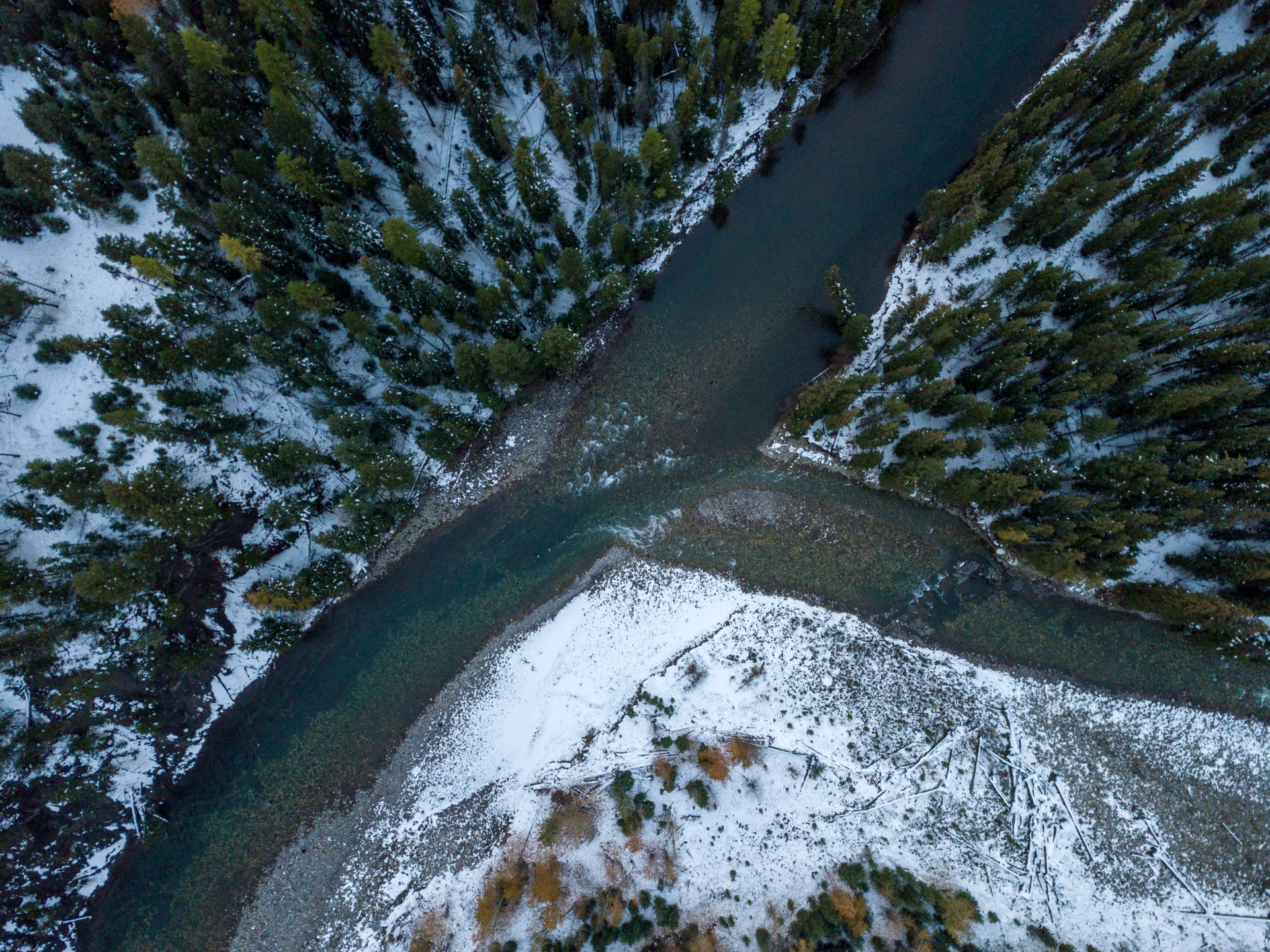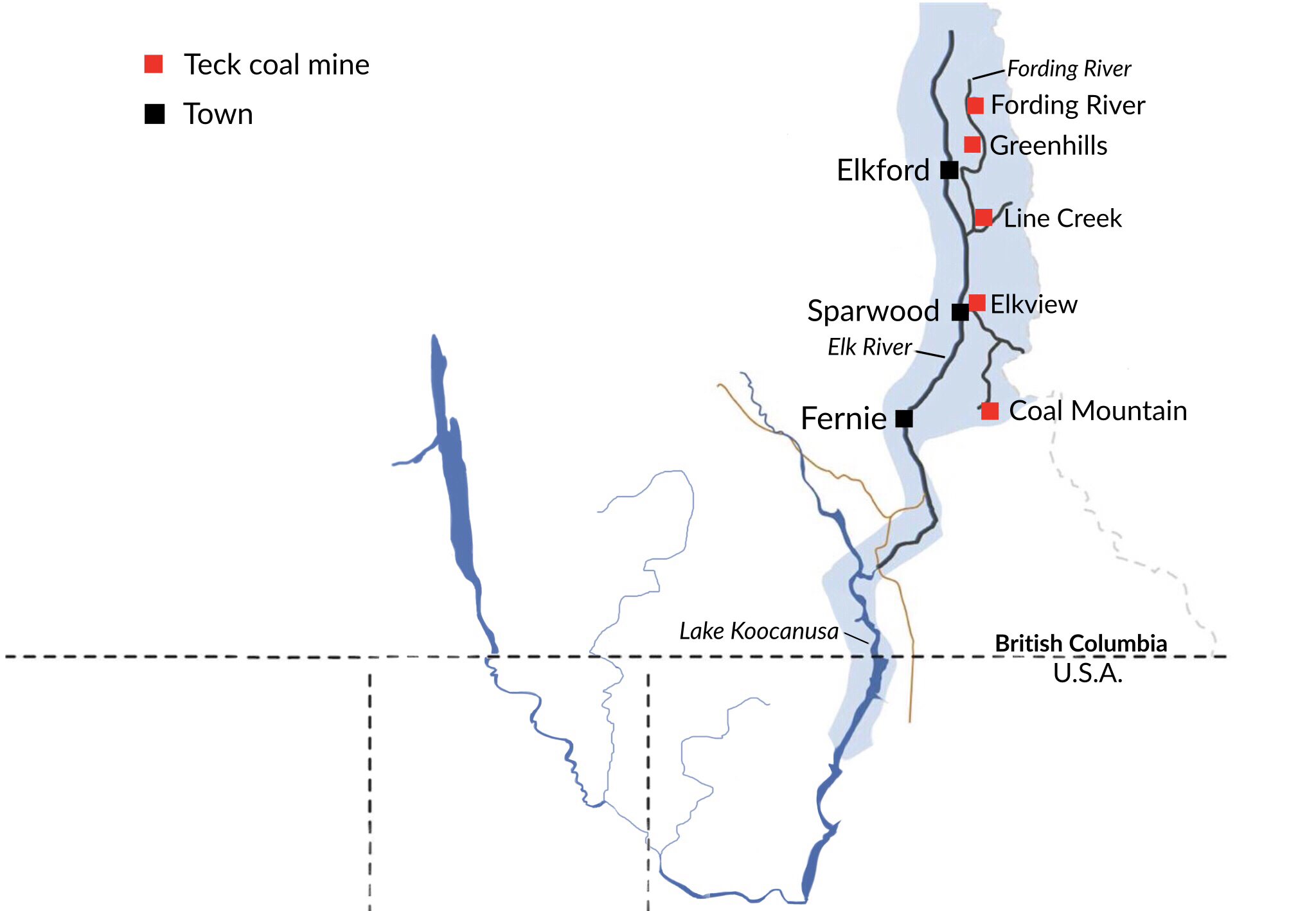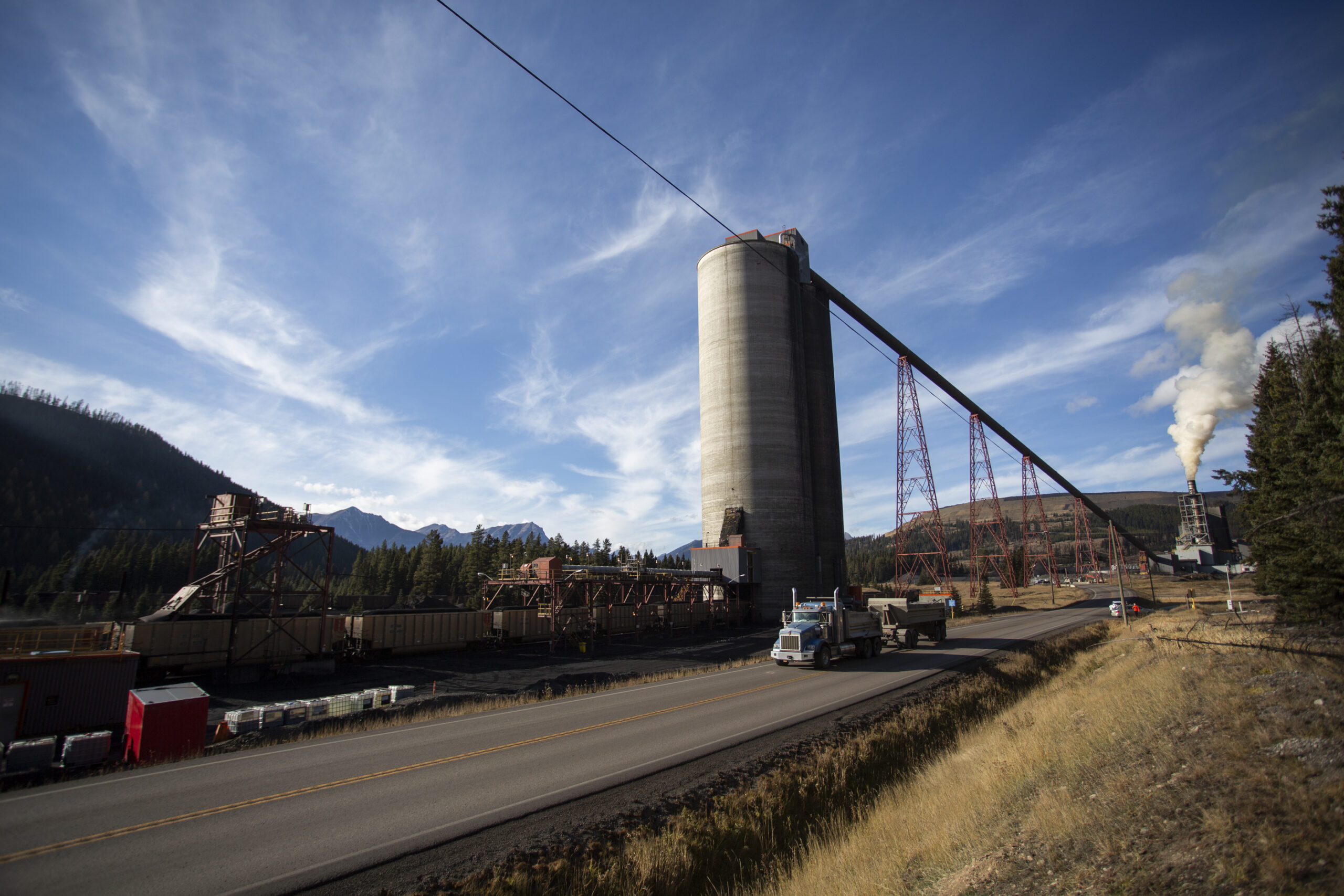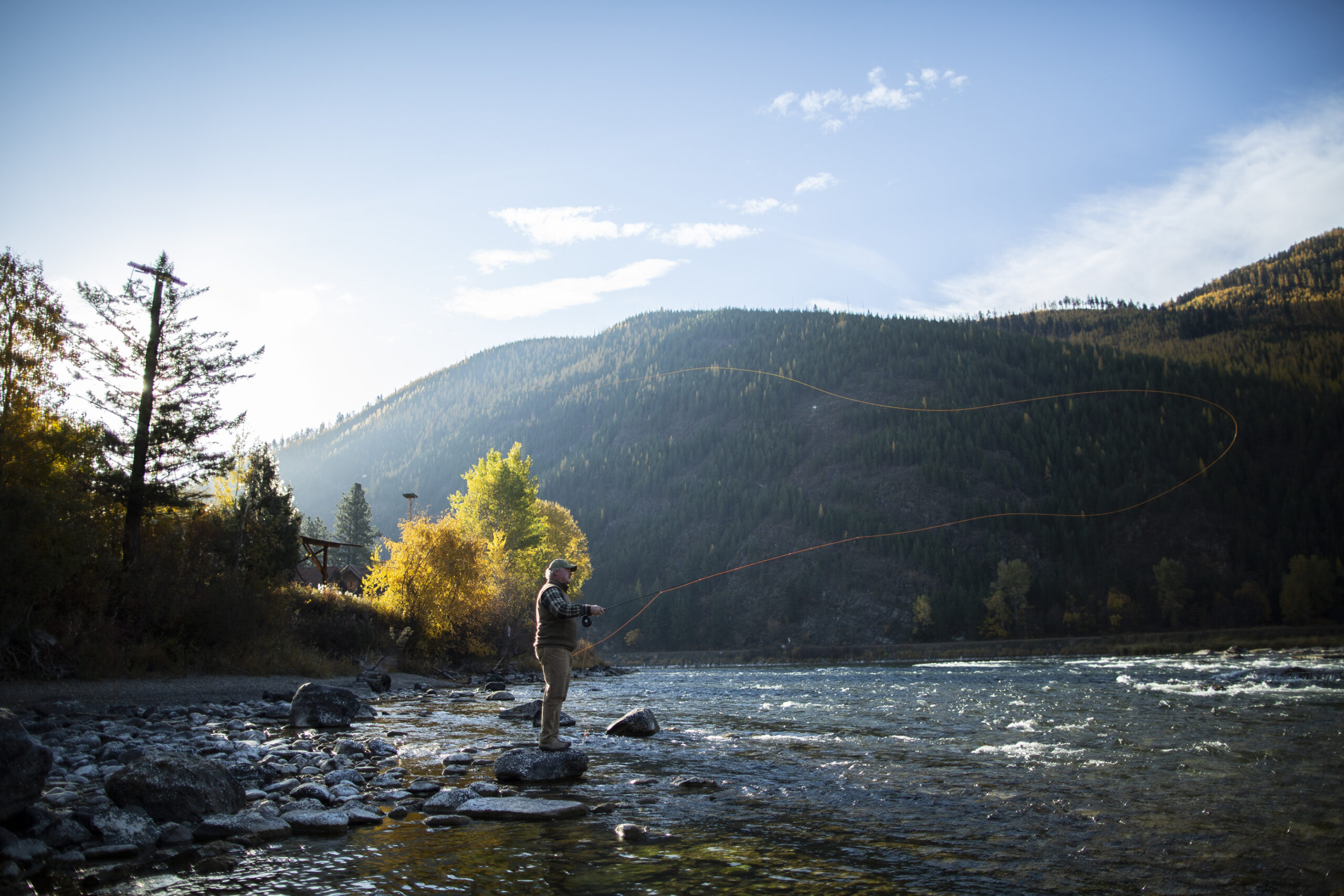
The root of the problem in northern Ontario
This story about a lawsuit involving First Nations in northern Ontario has deep roots — in...
Nearly 12 years after Ktunaxa Nation first urged the Canadian and U.S. governments to task an international body with investigating the mine pollution coursing through its territory, the two countries have agreed to a step the nation says is key to addressing contamination from B.C.’s Elk Valley coal mines.
In a statement Monday, ambassadors representing both countries announced they have asked the International Joint Commission to study and make recommendations to address the long-standing pollution in the Elk and Kootenay rivers in southeast B.C.
“We hope this is the beginning of a collaborative, transparent and effective process that will restore the waterways in the heart of ʔamakʔis Ktunaxa [Ktunaxa territory] that are vital to the Ktunaxa ʔakⱡsmaknik (people),” Kathryn Teneese, chair of the Ktunaxa Nation Council, which represents four First Nations in B.C., said in a statement Monday.

The International Joint Commission was established under the 1909 Boundary Waters Treaty to address intractable disputes related to transboundary waterways and many have long seen it as a natural venue to address concerns over water pollution stemming from more than a century of coal mining in southeast B.C.
A key concern for the nation is the risk selenium may pose to fish and other aquatic life downstream.
Over more than a decade the Ktunaxa Nation, which includes four First Nations in B.C., the Confederated Salish and Kootenai Tribes in Montana and the Kootenai Tribe of Idaho, urged successive governments in the U.S. and Canada to refer the matter to the commission. But, for years, the nation faced resistance from governments in Canada.
Now, after protracted negotiations, the U.S. and Canadian governments, in partnership with Ktunaxa Nation, have asked the commission to convene a governance body comprised of all affected governments within the region to develop an action place to reduce the impacts of mine pollution on the watershed. The commission is also being asked to establish a two-year study board of experts and knowledge holders to better understand the pollution and its impact on people and other species.
The news comes almost a year after U.S. President Joe Biden and Prime Minister Justin Trudeau said they intended to reach an agreement in principle to address the impacts of water pollution in the Elk-Kootenay watershed — and at a pivotal moment for mining in the Elk Valley. Alongside proposals for new and expanded coal mining in the region, Teck announced late last year that it plans to sell its Elk Valley mines to Glencore, pending federal approval.

In a joint Ktunaxa statement Monday, Gary Aitken Jr., the vice chairman of the Kootenai Tribe of Idaho, called the move to involve the International Joint Commission “an important first step in addressing the serious pollution problem in the Kootenai Watershed.”
“For decades, mining has impacted our waters, our people and our resources,” he said. “While we were seeking action, things moved far too slowly and the federal government looked the other way.”
“I am glad to see that the U.S. and Canada are finally taking their commitments to Indigenous Peoples, the environment and the international Boundary Waters Treaty seriously.”
Metallurgical coal, which is used to make steel, has been mined from the Rocky Mountains in southeast B.C. for more than a century. The mines, which are currently owned by Teck, are a major employer in the Elk Valley and foundational to the regional economy.
But every tonne of coal mined from these mountains results in an enormous amount of leftover waste rock. When that waste rock is exposed to rain and snow, naturally occurring minerals like calcite and selenium seep into the water, eventually flowing into nearby rivers and creeks.
While all living things need a tiny amount of selenium, too much of it can be toxic. In fish, for instance, too much selenium has been shown to cause deformities and reproductive failure. Calcite, meanwhile, can solidify the loose gravel on the stream bed that fish rely on to create protective nests for their eggs.

Teck has invested more than $1.4 billion in water treatment facilities and other measures to address the pollution. But selenium continues to be detected downstream at concentrations that exceed the level the B.C. government recommends to protect aquatic life.
Monthly average selenium levels in the Fording River, downstream of Teck’s mines, ranged from 53 parts per billion to 61 parts per billion between October and December 2023. Those levels fall below the limit of 63 parts per billion outlined in Teck’s permit, which is the level the company is required to meet by the province, but are above the level B.C. recommends to protect aquatic life — two parts per billion.
In February, March and April of 2023, average selenium concentrations ranged from 63 to 68 parts per billion, exceeding the limits in Teck’s permits.
Chris Stannell, a spokesperson for Teck, said in a statement to The Narwhal the company is making “significant progress” implementing the Elk Valley Water Quality Plan. The plan, which Teck was ordered to develop in 2013, aims to stabilize and reduce pollution from the company’s mines.
The company currently has capacity to treat 77.5 million litres of water a day, which represents a fourfold increase in treatment capacity since 2020, Stannell said. He added the company has plans to build six more water treatment facilities by 2027, increasing treatment capacity to 150 million litres per day.
“The plan is working, selenium concentrations have stabilized and are now reducing downstream of treatment,” he said.

Stannell noted the water treatment facilities remove between 95 and 99 per cent of selenium from the water they treat.
But the company does not yet have sufficient capacity to treat all of the water contaminated by the mines before it flows downstream, according to information posted to the province’s Elk Valley Water Quality website.
In a statement, Casey Brennan, the conservation director at the Kootenay-based conservation organization Wildsight, said the International Joint Commission “investigation could not have come soon enough.”
“For a crisis as complex as the one we face in the Elk Valley, there won’t be any simple solutions,” he said. “The announcement of this investigation is the first step on what will be a long road to change and it would not have happened without the steadfast leadership of the transboundary Ktunaxa Nation.”
“We must ensure that scientific integrity and respect for Indigenous Peoples and knowledge along with transparency are upheld as guiding principles throughout the process,” he said.

In an interview with The Narwhal, Teneese said despite the company’s efforts, not enough is being done to address the pollution or to ensure compliance with existing regulations and obligations.
“We’ve expressed concern that we don’t feel that they’re necessarily doing all that they can do,” she said. “We’re hopeful that an independent body, such as the International Joint Commission, can provide us with information and possible solutions about how we might move forward to address the concerns that have been raised over the years.”
Ultimately, the process “will require sustained effort from all governments involved,” Michael Dolson, chairman of the Confederated Salish and Kootenai Tribes said in the joint Ktunaxa statement. “We will continue to work tirelessly to restore our rivers and the fish and wildlife that depend upon them,” he said.
For B.C., the International Joint Commission process may also offer learning opportunities about whether the province’s existing system of legislation and regulations is doing what it’s meant to — protecting the environment and, in particular, the water, Teneese said.
“We know how important water is to all living things,” she said. “If we don’t have water, we’re not going to be here for very long.”
In a joint statement, George Heyman, Josie Osborne, Murray Rankin and Nathan Cullen, the B.C. ministers responsible for environment, mines, Indigenous relations and water and lands, respectively, expressed their support and commitment to “fully engage” with the International Joint Commission process, which the province previously opposed.
“We welcome the creation of a process that brings together representatives to share progress, validate issues and facts, and gather information in a way that is respectful and inclusive of Indigenous Knowledge,” the ministers’ statement said.
“We see this as an opportunity to build upon existing work and enhance information sharing and transparency to the benefit of the region’s people and ecologically responsible resource development.”
“Improving and protecting water quality has always been a key priority for British Columbia,” the joint statement added.
In their formal request to the International Joint Commission, the U.S. and Canadian governments asked the body to establish a formal governance structure by the end of June that would allow for the co-development of future actions to address the pollution.
Making sure the study board and governance body have access to all the information they need to understand the contamination and develop solutions will be crucial to ensuring this process is helpful, Teneese said.
“We’re hoping that we can work in partnership with all involved to ensure that what is being left behind by us today is sustainable for future generations,” she said.
Content for Apple News or Article only Get the inside scoop on The Narwhal’s environment and climate reporting by signing up for our free newsletter. This...
Continue reading
This story about a lawsuit involving First Nations in northern Ontario has deep roots — in...

At a crucial point in their research, biologists are scrambling to find new support for...

From True Detective to The Grizzlies, the Inuk actor is known for badass roles. She's...

